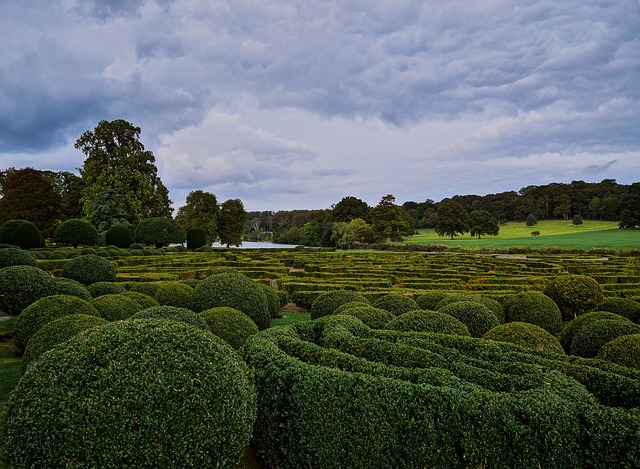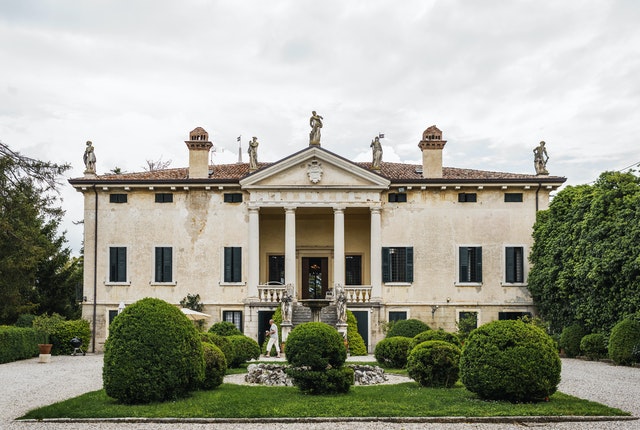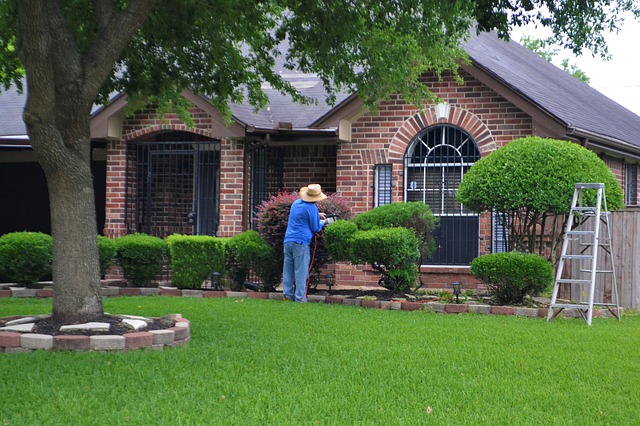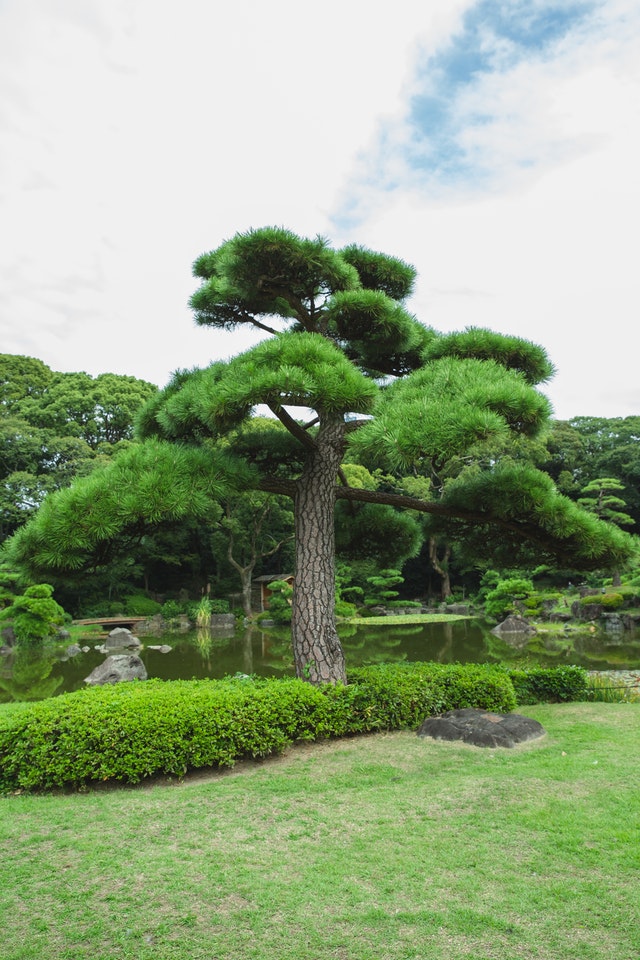One last piece of organic topiary that deserves a mention and is also close to home in Dorset is perhaps the most remarkable of the lot. Tucked away behind the A 35 road lives a remarkable yew tree, and this really is a tree, in size, shape and proportion. Whereas most of the organic topiary one comes across is in the guise of hedges or other forms of rounded topiary, this is a free-standing tree, at least 30 ft. (10 m) tall. Its story began back in the 1930 s when the tree, growing close to the owner’s house and becoming a liability, was curt back. It was chopped at around 8ft. (2.4m), leaving a straight trunk that was expected to re-sprout, but rater than sending out new growth from the top, it sent out suckers from the base, one of which became dominant and started a second life for the tree. Twenty years ago, still being so close to the house, this new tree needed pruning too, so it was curt back to a framework of branches. That framework became the structure of the present tree, and since then it has been shaped and clipped every year. Even more amazing than the tree itself is the fact that the owner is in his 80s and spends most of August on the yearly clip, using a collection of ladders to get at all the braches and to climb into the canopy of the tree itself, from where he can reach the very highest central parts.
Over the years, this tree’s branches have got denser and denser-they started off virtually bare, and gradually thickened up-until now the whole thing resembles a massive head of broccoli as much as anything else. The annual clip is done entirely with hand shears, but what is interesting to me is how similar this tree’s creation was to that of Japanese niwaki. Cutting back evergreens and conifers to provide a new framework for them to grow to is known as fukinaoshi in Japan, a common nursery practice which literally translates as to re-do or start again. The new foliage that emerges from the cut branches is then trained and clipped into shape, giving the character of a mature tree in a more contained scale.
The tree in Dorset is unique among the yew topiary of England in that it is the only one that I know of that is pruned, in a perverse way, to resemble a tree-something that places it nearer the Japanese tradition of niwaki than the English tradition of organic topiary. The idea that one might deliberately prune a tree-and a large one at that-into a tree shape, rather than a geometric, topiarised form, might seem slightly absurd to some people, but it all makes perfect sense when the effect is actually seen in the flesh-by recreating a tree in this manner, both its character and that of the creator are evident, an essence of tree as perceived by the artist. Similarly shaped trees are to be found in the Retiro Park in Madrid, where specimens of Cupressus Sempervirens are pruned into large, brain-like topiary. At first sight, these trees seem at odds with their surroundings, out of context and slightly surreal, especially considering that they are Italian cypresses and have no right to be growing in this shape, but on further inspection, they sit comfortably within their formal environment and are a strong reminder of what is possible with a sharp pair of shears and a bit of cunning.






